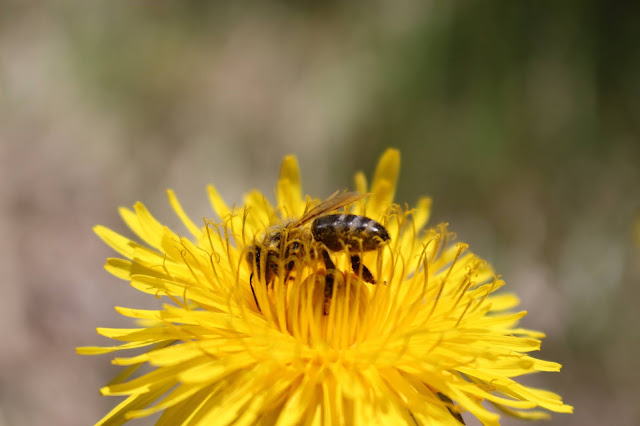In this blog we continue our series on introducing queens as well as provide an update on some important Canadian honey bee research. Thanks to all the beekeepers for your positive feedback on our blog and specifically those new to queen production finding our recent information beneficial. Every new producer helps our industry in moving towards self sufficiency in queen production. In the recent Summer 2020 edition of the Hive Lights, published by the Canadian Honey Council, Rod Scarlett (Executive Director) comments on the importance of domestic self sustainability to our industry and specifically mentions opportunities around queen production. This is worth a read and, as always, the Hive Lights is a great way to inform yourself on what is happening in the beekeeping industry across the country. Receiving the Hive Lights is one of the many benefits of membership to your provincial beekeeping association!
Introducing Queens - Part 2
Introducing
caged queens to splits/nucleus colonies
A purchased queen, especially one that has been imported from another country will have gone through a period of not laying for a few or perhaps even several days. Every step to increase the chance of the colony accepting the new queen will reduce frustration and financial loss.
• When queens arrive, give them a few drops of water - repeat
every day they are not in the hive. Keep them in a dark place (out of the
sunlight) at room temperature. Make sure there is candy in the queen cage. If
the candy is gone, add a new candy plug. The queen can survive for several days
in the cage, but the sooner she is introduced into a colony, the better.
• Make the colony split 24 hours before introduction.
• Remove the attendants immediately before introduction. Keeping the queens without attendants for too long may affect the health of the
queen. Remove the attendants in an enclosed location, near a closed window, in
case the queen escapes - she will usually fly toward the window.
• Spritz the queen cage with sugar syrup spray (can contain a
drop of lemongrass oil). The bee frames can also be spritzed.
• Remove the cork plug and insert the candy plug. The candy plug serves to delay the release of the queen by a few days during which time the bees can get adjusted to the new queen pheromone. Alternatively, the cork plug can remain in place for a few days and the beekeeper can choose when to release the queen.
• Slide the queen cage between frames of the brood nest.
• After a few days, check if the queen has been released and she is laying. Look for eggs and/or young larvae if the queen can’t be found. If the queen is found, mark her.
•
Leave the colony
undisturbed for the next few weeks while the new queen establishes her brood
nest.
•
The split, if made
strong enough in the spring, should reach pollination standard before hives are
sent to blueberries.
• The nuc colony, if made strong enough in the summer, should have enough bees by the fall to make it through the winter.
Discerning whether the bees are acting aggressively toward the new queen can give an indication of queen acceptance. If the bees are biting and clinging tightly to the queen cage, they are unlikely to accept her. If the bees are gently covering the queen cage and can be easily brushed off, chances are, the queen will be accepted into the colony. If a colony does not accept a queen, they will form a ball around her and suffocate her to death. This is not something you want to see when you open up a newly re-queened colony. If caught in time, the queen can be saved from the ball and put back in the safety of her cage.
Honey Bee Gut Health
New Canadian research suggests that the microorganisms living in the honey bee gut vary between summer and winter. A team of researchers from Laval University, led by Pierre Giovenazzo and Naomie Bleau, characterized the gut microorganisms of the honeybee during the overwintering period in our Canadian climate! Not surprisingly, the research found that the gut of the honey bee changed during the seasons depending on nutrition, weather and chemical mite treatments. What is surprising is that certain changes in the diversity of the gut microbes that occur in Spring are linked to non thriving hives. Hive fed on a winter diet, honey from sugar water and aged bee bread, seemingly have less healthy guts. We will watch closely as this group continues their research looking at the significance of gut microflora on honey bee health. This research is an intriguing start towards a full understanding of the seasonal changes in the honey bee gut and ultimately will have practical implications for beekeepers in improving honey bee health.
Further details on the research paper can be read here - https://www.mdpi.com/2076-2607/8/8/1146
Connecting with ATTTA SpecialistsIf you’d like to connect with ATTTA specialists or learn more about our program, you can:
visit our website at https://www.perennia.ca/portfolio-items/honey-bees/
Email abyers@perennia.caThanks for following along with our blog and keeping up with the ATTTA buzz & don't forget to subscribe!


